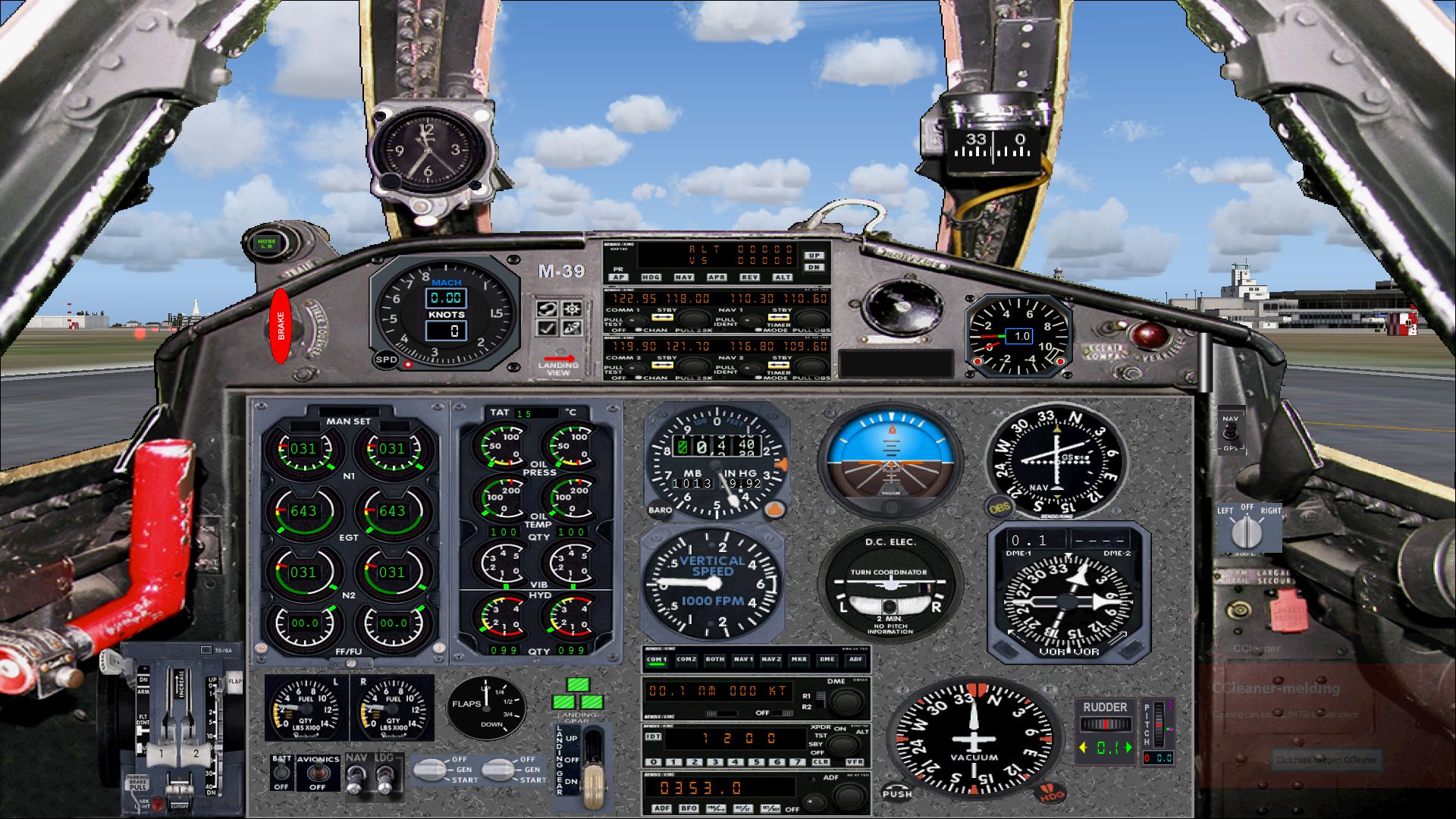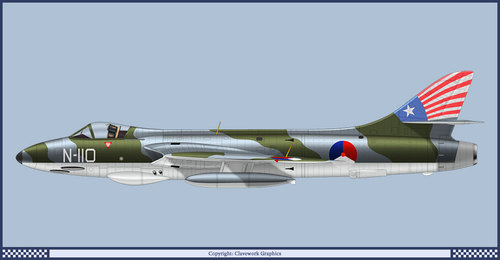
Type: Fouga CM 170 Magister
Program: FS2004 and FSX
Model: Restauravia
Operator: Belgian Airforce
Download: Complete aircraft
In 1949, the Armée de l'Air Française (French Air Force) decided to equip their flying schools with a two-seats jet-powered trainer. Turbomeca began with the study and construction of a engine with 400kg thrust. A suitable motor was not available at that time. Halfway through 1952 came the Turbomeca Marboré II with the desired thrust available. The by Air Fouga developed CM 170 made ??with these engines its first flight on 07.23.1952. Besides France ,the CM 170 was purchased by twenty countries. The total production amounted to 929 copies. Belgium ordered in 1958 45 Magisters to replace its T-6 Harvard and bought another 5 in 1970 from the German Air Force. Belgium and the Netherlands had a joint pilot training. During the Advanced Flight Training a 150 hours were flown on the Magister..
Type: Percival Proctor IV
Program: FS2004 and FSX, pack with 3 repaints
Model: Keith Paine
Operator: LSK/RNethAF
Download: Complete aircraft
The Percival Proctor Mk.IV is a radio communication trainer and liaison aircraft from WWII, which was developed from the Percival Gull from 1932. In 1946 the LSK(later RNethAF) purchased 11 Proctors from the WWII surplus of the RAF. Until 1952/53 they are mainly used as a radio communication trainer at Woensdrecht Air Base. They were delivered in RAF colors, the RAF roundels were replaced by the Dutch and later the aircraft were entirely yellow painted with the exception of the W-1, which maintained its silver color. In 1953 they were put out of service and not much later scrapped.
Type: Avro Anson Mk.1
Program: FS2004 and FSX, pack with 2 repaints
Model: Dave Garwood
Operator: LSK/RNethAF
Download: Complete aircraft
The Avro Anson is a sea pathfinder and flew in 1935 for the first time. The aircraft was developed from the civilian type Avro 652 from 1933. It had a fuselage of a welded tube construction covered with linen and had wooden wings.In WWII Anson became the standard cost patrol- and rescue aircraft of the RAF and the RAAF. In total, there are over 10,000 Anson's built. In 1946 the LSK (later the Royal Netherlands Air Force) purchased 25 Ansons from the WWII surplus of RAF. Until 1952/53, they are mainly used for twin engine and instrument training. They were delivered in RAF colors. The RAF roundels were replaced by the Dutch roundels and later the aircraft were painted in yellow.In 1952/53 they were replaced by the Beechcraft TC-45's. The D-8 was the former DJ661 in service with the RAF and from June 1947 till October 1953 in service with the LSK.
Type: Airspeed A.S.10 Oxford
Program: FS2004 and FSX, pack with 2 repaints
Model: Keith Hackett
Operator: LSK/RNethAF
Download: Complete aircraft
The Airspeed Oxford A.S.10 is designed and used as a trainer for the secondairy multi-engine training at the RAF in the late thirties. It is the military version of the Airspeed Envoy A.S.6 and made its first flight in 1937. The Oxford was from 1938 till 1946 in service with the RAF. In 1945/46 the LSK (later the Royal Netherlands Air Force) purchased total of 28 Oxfords from the WWII surplus of the RAF. The MLD(Dutch Naval Air Service) purchased five and leased another four. In the Netherlands they were also used as trainers for the secondairy multi-engine training. The aircraft were delivered in RAF colors, the RAF roundels were replaced by the Dutch roundels and later they were painted yellow. During 1952/53 they were replaced by the Beechcraft TC-45's. The C-2 (RAF registration RR348) was in service with the LSK from May 1945 till August 1952.
Type: Airspeed A.S.10 Oxford
Program: FS2004 and FSX, pack with 2 repaints
Model: Keith Hackett
Operator: R.Neth.N.A.S
Download: Complete aircraft
From the WII surplus of the RAF the MLD purchased 5 Ansons and leased another four. The MLD used them till 1952 as trainers for the secondairy multi-engine training as well. The aircraft were delivered in RAF colors, the RAF roundels were replaced by the Dutch roundels and later they were painted navy grey. In 1952/53 they were replaced by the Beechcraft TC-45's. The 18-1 (RAF registration PH308) was in service with the MLD from October 1947 till September 1953.
Type: Hawker Hunter Mk.4
Program: FS2004 and FSX, pack with 2 repaints
Model: Dave Garwood
Operator: RNethAF
Download: Compleet aircraft
The Hawker Hunter designed by Sir Sydney Camm's design team made its maiden flight in 1951. A consortium of Fokker, Aviolanda, De Schelde in the Netherlands and Avions Fairey, SABCA and FN-Herstal in Belgium was commissioned in 1953 to produce 445 aircraft under license. FN-Herstal built the engines, while Fokker, SABCA and Fairey took care of the construction of the aircraft. Fokker built 189 Hunters Mk.4 and Mk.6 for the KLu plus 104 aircraft for the Belgians. 152 Hunters were built in Belgium. In the Netherlands, the Hunters replaced the Gloster Meteors. The first six Hunters Mk.4 for the Royal Netherlands Air Force were built at Hawker in England, while the other 90 aircraft were built by Fokker. The Mk.6 had a more powerful engine, sawtooth wings, improved steering and additional fuel pylons under the wings. The already delivered Mk.4 were later brought up to Mk.6 level. From 1963 to the end of 1968, the Hunters were gradually replaced by the Lockheed F-104G Starfighter. In total1,969 Hunters were built.
From October 1960 to September 1962 the first 12 Hunter Mk.4 aircraft flew with no. 322 squadron in Dutch New Guinea at Biak. At the end of December 1961, another 14 Hunter Mk.6 were added. Under pressure from the United Nations, Dutch New Guinea was handed over to Indonesia in 1962 and the Hunters went back to the Netherlands. The Mk.4 N-110 flew very shortly with the flag of Papua New Guinea on its tail. A pratical joke of the ground crew. In view of the tense political situation the commander in chief was "not amused" and the aircraft had to be brought back in its original livery.
Type: Breguet 1150 Atlantic 1
Program: FS2004 and FSX
Model: Massimo Taccoli
Operator: MLD Dutch Naval Service
Download: Complete aircraft
Following NATO specifications from 1958, the Atlantic was designed by Breguet as a maritime patrol aircraft as a successor to the Lockheed Neptune. The development and construction were done by a European consortium of manufacturers under the name of SECBAT (Société d'Étude et de Construction de Breguet Atlantic).The first prototype flew in October 1961, the second in February 1962. In 1963, the French Navy ordered 40 aircraft and Germany 20, which were delivered between 1965 and 1968. Production had actually just ended when the MLD(Dutch Naval Service) ordered 9 aircraft, followed later by an order for 18 aircraft for Italy. The MLD Atlantics were delivered from February 1970 to February 1972. The MLD was not very happy with the aircraft. Two crashed into the sea due to engine trouble and a third had to make an emergency landing off the Dutch coast near Wassenaar. At the end of 1984, the remaining five were sold to France and replaced by the Lockheed Orion.
1946
1947
1950
1947
1950
1947
1950
1947
1950































